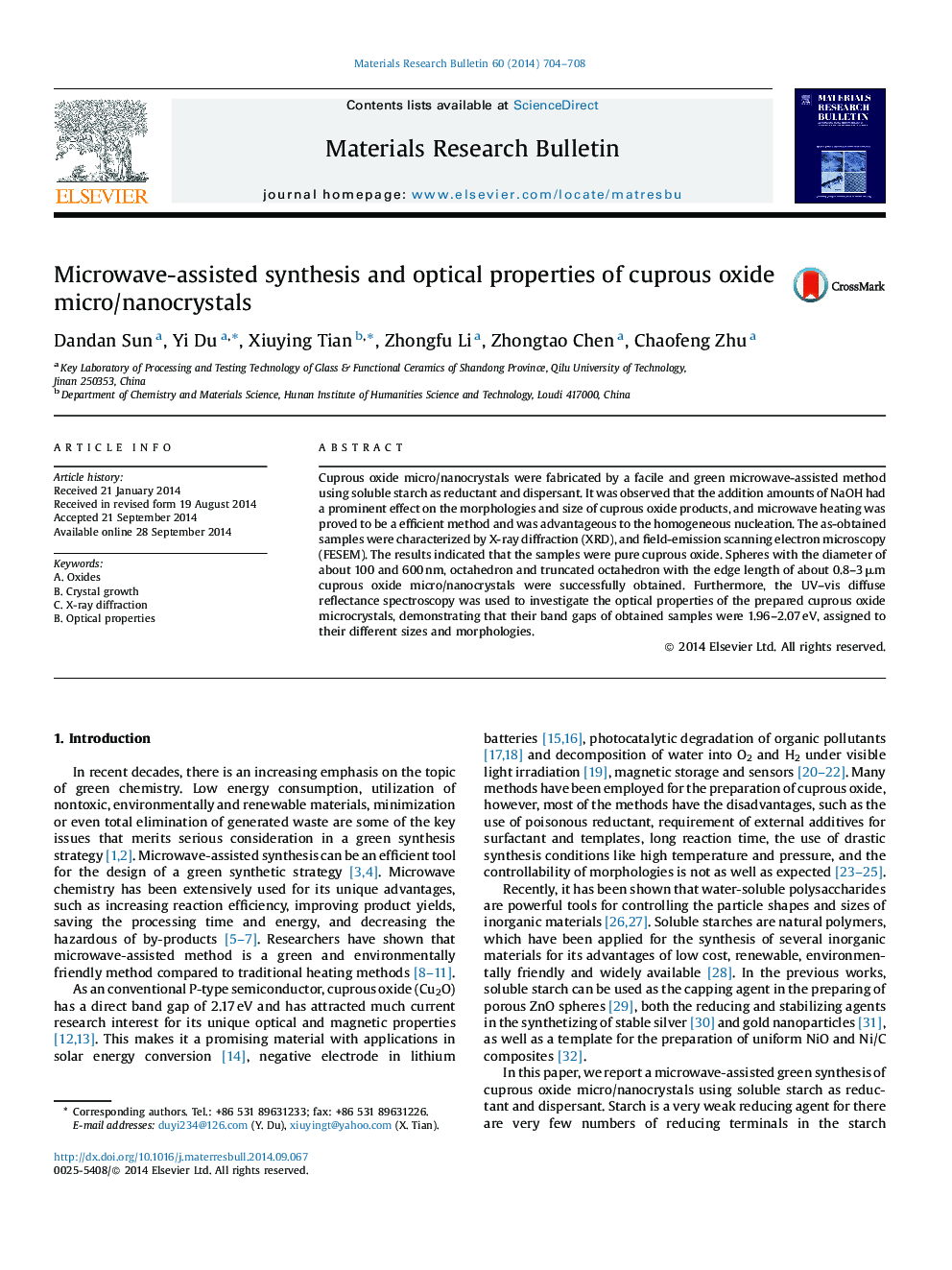| کد مقاله | کد نشریه | سال انتشار | مقاله انگلیسی | نسخه تمام متن |
|---|---|---|---|---|
| 1487897 | 1510715 | 2014 | 5 صفحه PDF | دانلود رایگان |
Cuprous oxide micro/nanocrystals were fabricated by a facile and green microwave-assisted method using soluble starch as reductant and dispersant. It was observed that the addition amounts of NaOH had a prominent effect on the morphologies and size of cuprous oxide products, and microwave heating was proved to be a efficient method and was advantageous to the homogeneous nucleation. The as-obtained samples were characterized by X-ray diffraction (XRD), and field-emission scanning electron microscopy (FESEM). The results indicated that the samples were pure cuprous oxide. Spheres with the diameter of about 100 and 600 nm, octahedron and truncated octahedron with the edge length of about 0.8–3 μm cuprous oxide micro/nanocrystals were successfully obtained. Furthermore, the UV–vis diffuse reflectance spectroscopy was used to investigate the optical properties of the prepared cuprous oxide microcrystals, demonstrating that their band gaps of obtained samples were 1.96–2.07 eV, assigned to their different sizes and morphologies.
Cuprous oxide micro/nanocrystals were fabricated by a facile and green microwave-assisted method using soluble starch as reductant and dispersant. Spheres with the diameter of about 100 and 600 nm, octahedron and truncated octahedron with the edge length of about 0.8–3 μm cuprous oxide micro/nanocrystals were successfully obtained. Microwave heating was proved to be a efficient method and was advantageous to the homogeneous nucleation. Growth mechanism of the prepared Cu2O microcrystals were investigated carefully. Furthermore, the optical properties of the prepared cuprous oxide microcrystals were investigated by UV–vis diffuse reflectance spectroscopy, demonstrating that their band gaps of obtained samples were 1.96–2.07 eV, assigned to their different sizes and morphologies.Figure optionsDownload as PowerPoint slide
Journal: Materials Research Bulletin - Volume 60, December 2014, Pages 704–708
